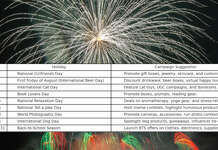Asset tokenization is transforming the way assets are managed and traded. By leveraging blockchain technology, it is possible to represent physical and digital assets as tokens on a blockchain, enabling fractional ownership, enhanced liquidity, and improved transparency. This guide provides a comprehensive overview of asset tokenization, its benefits, challenges, use cases, and the future of this innovative technology.
1. Understanding Asset Tokenization
1.1 Definition of Asset Tokenization
Asset tokenization is the process of converting ownership rights in an asset into a digital token on a blockchain. This digital representation can be traded, transferred, or used as collateral, just like physical assets.
1.2 Types of Assets That Can Be Tokenized
- Real Estate: Properties, land, and buildings.
- Financial Assets: Stocks, bonds, and other securities.
- Commodities: Gold, oil, and other natural resources.
- Art and Collectibles: Paintings, sculptures, rare items.
- Intellectual Property: Patents, trademarks, copyrights.
- Digital Assets: Cryptocurrencies, digital content.
1.3 How Tokenization Works
- Asset Identification: Determining which asset to tokenize.
- Token Creation: Issuing a digital token that represents ownership in the asset.
- Smart Contracts: Using blockchain-based contracts to govern the issuance, transfer, and management of tokens.
- Regulatory Compliance: Ensuring the tokenization process adheres to relevant laws and regulations.
2. Benefits of Asset Tokenization
2.1 Enhanced Liquidity
Tokenization enables fractional ownership, allowing investors to buy and sell small portions of an asset, thus increasing its liquidity.
2.2 Reduced Costs
Blockchain technology can reduce transaction costs by eliminating intermediaries and streamlining processes.
2.3 Transparency and Security
Blockchain provides an immutable and transparent ledger, enhancing trust and security in transactions.
2.4 Accessibility and Inclusivity
Tokenization democratizes access to high-value assets, allowing a broader range of investors to participate.
2.5 Faster Transactions
Blockchain enables near-instantaneous transactions, improving efficiency in asset management and trading.
3. Challenges and Risks of Asset Tokenization
3.1 Regulatory and Legal Issues
Different jurisdictions have varying regulations, and navigating these can be complex.
3.2 Technological Risks
Blockchain technology, while promising, is still evolving and may have vulnerabilities.
3.3 Market Acceptance
The adoption of tokenized assets is still in its early stages, and gaining market trust can be challenging.
3.4 Valuation and Pricing
Determining the value of tokenized assets can be complex, especially for illiquid or unique assets.
3.5 Security Concerns
While blockchain itself is secure, the Enterprise blockchain development platform and exchanges handling tokenized assets may be vulnerable to hacks and fraud.
4. Use Cases of Asset Tokenization
4.1 Real Estate
Tokenization allows for fractional ownership of real estate properties, making investment more accessible and liquid.
4.2 Art and Collectibles
Tokenizing art and collectibles provides a way for collectors to buy and sell fractions of high-value items.
4.3 Financial Instruments
Stocks, bonds, and other securities can be tokenized, offering improved liquidity and faster settlement times.
4.4 Supply Chain and Commodities
Tokenizing commodities and using blockchain for supply chain management can enhance transparency and traceability.
4.5 Intellectual Property
Tokenizing intellectual property rights can provide a new way to manage and monetize patents, trademarks, and copyrights.
5. The Process of Tokenizing an Asset
5.1 Asset Selection
Choosing an asset to tokenize based on factors like value, liquidity, and regulatory considerations.
5.2 Legal Framework
Establishing a legal structure that supports the tokenization process and ensures compliance with relevant laws.
5.3 Token Issuance
Creating digital tokens on a blockchain platform that represent ownership in the asset.
5.4 Smart Contract Development
Developing smart contracts to automate the management and transfer of tokens.
6. Regulatory Landscape
6.1 Global Regulatory
Environment Overview of how different countries are approaching the regulation of tokenized assets.
6.2 Key Regulatory Considerations
Security Tokens vs. Utility Tokens: Understanding the differences and regulatory implications.
Investor Protection: Measures to protect investors in tokenized assets.
7. The Future of Asset Tokenization
7.1 Technological Advancements
Scalability: Improving blockchain scalability to handle more transactions.
Privacy: Developing privacy-enhancing technologies for blockchain transactions.
7.2 Market Trends
Institutional Adoption: Increasing interest from institutional investors.
New Asset Classes: Expansion of tokenization to new types of assets.
7.3 Potential Challenges
Regulatory Changes: Evolving regulations and their impact on tokenization.
Technological Risks: Addressing ongoing security and scalability challenges.
Conclusion
Asset tokenization on the blockchain represents a significant innovation in the way assets are managed and traded. By enabling fractional ownership, enhancing liquidity, and improving transparency, tokenization has the potential to democratize access to high-value assets and transform various industries. However, navigating the regulatory landscape and addressing technological challenges will be crucial for the widespread adoption of this technology. As the market evolves, continued advancements in blockchain technology and regulatory frameworks will shape the future of asset tokenization.






